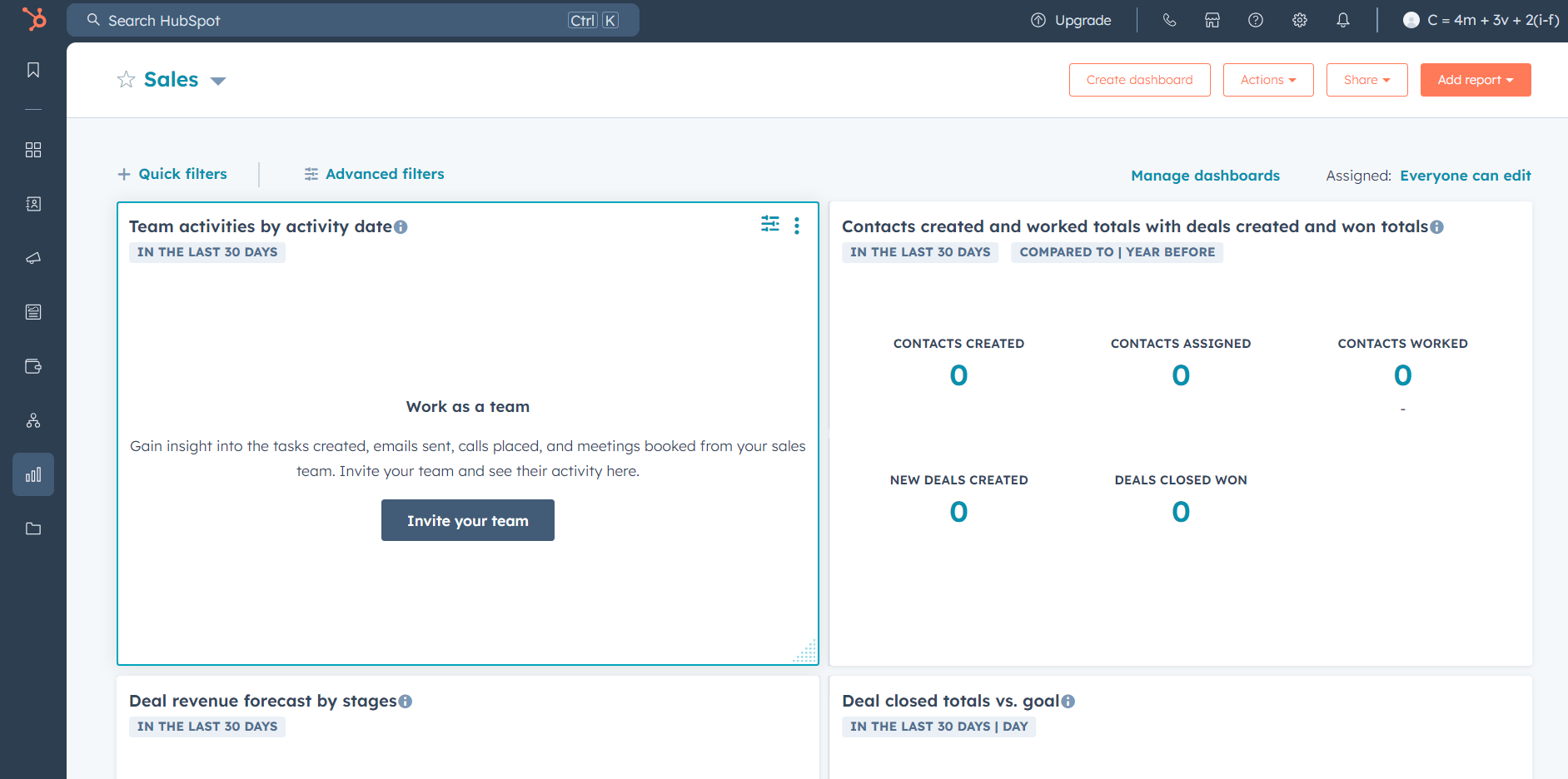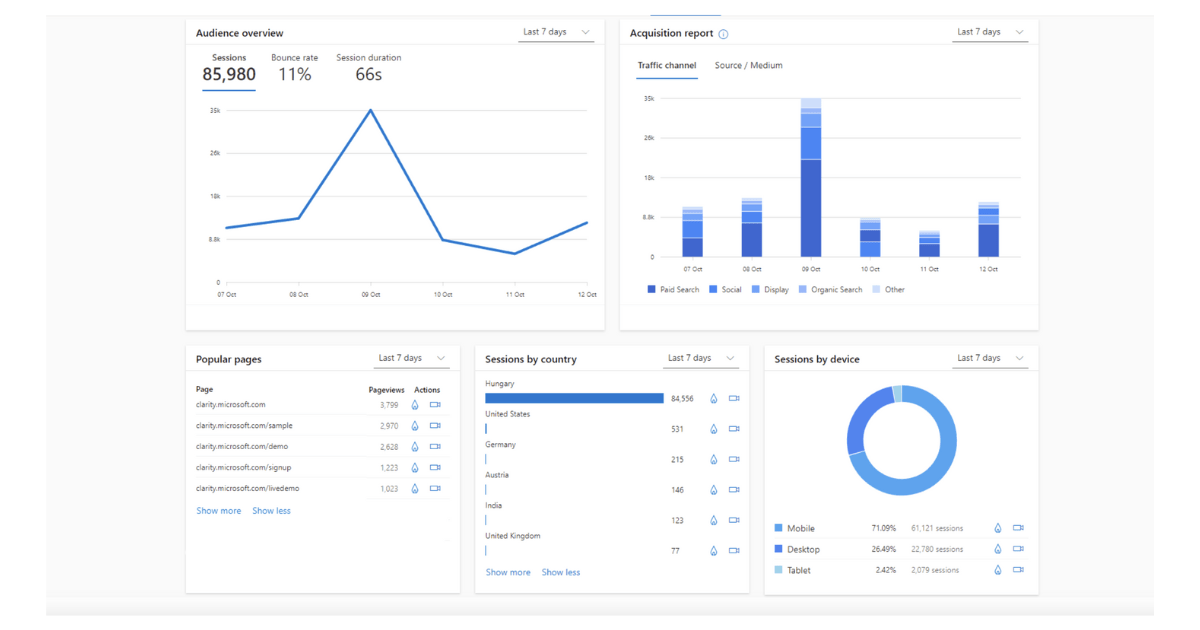Navigating Budget Cuts: Effective Strategies to Help Your Marketing Team Do More With Less

- Align marketing and finance goals to advocate for necessary budgets for both short-term and long-term growth.
- Leverage automation tools to save time and focus on strategic activities, using platforms like HubSpot and Zapier.
- Optimize marketing efforts by being data-driven; use Google Analytics to track and adjust strategies based on performance metrics.
- Focus on customer retention through personalized communication and loyalty programs to maximize lifetime value.
- Adopt agile marketing principles, such as A/B testing, to quickly adapt and optimize campaigns for better outcomes.
Navigating budget cuts can be challenging, especially for marketing teams tasked with delivering results despite reduced resources. As budgets tighten, marketing departments must find innovative ways to maintain growth and optimize their strategies. This article offers actionable strategies to help your marketing team do more with less while maintaining effectiveness and efficiency.
Setting The Stage: Finance and Marketing Team Alignment
One key area where many companies struggle is maintaining their sales pipeline. Finance leaders often misinterpret the value of marketing investments, leading to budget cuts that can severely impact a company's growth trajectory. This disconnect between finance and marketing departments can make it difficult to justify expenditures that are crucial for long-term success.
For instance, consider the story of Manny, an Uber driver, who O8's CFO Jeremy Sanders met recently. Manny, who was between jobs as a digital marketer, faced significant budget cuts in his previous role, as companies opted for cost-saving solutions like ChatGPT and other automation tools. While these tools offered some benefits, they were insufficient in managing the sales pipeline effectively, leading to further complications and frustrations. Unfortunately, this tale is all too familiar for many alike.
To help you navigate these challenges, this full recap of our recent MLC Webinar explores effective strategies for maximizing your marketing efforts even when budgets are tight. From effectively leveraging automation tools to prioritizing high-ROI channels, this guide will provide actionable advice to enhance your marketing strategies and maintain growth despite financial constraints.
Challenges of Budget Cuts

Marketing teams often encounter numerous challenges when budgets are slashed. Reduced resources can lead to difficulties in maintaining the sales pipeline, optimizing campaigns, and justifying marketing investments. Finance leaders may not fully grasp the importance of sustained brand-building activities, crucial for feeding the sales pipeline.
Finance leaders often focus solely on immediate sales rather than long-term brand building. For example, when companies attempt to save costs by using tools like ChatGPT, they often find that these solutions only offer mediocre results and fail to effectively manage the sales pipeline.
Addressing this challenge requires a nuanced approach that bridges the understanding gap between marketing and finance departments. By aligning their goals and metrics, marketing leaders can better advocate for the necessary budget to sustain both short-term and long-term growth.
Effective Strategies for Doing More with Less
To help your marketing team thrive despite budget cuts, consider implementing the following strategies:
Leveraging Automation Tools

Automation tools can be a game-changer for marketing teams looking to do more with less. By automating repetitive tasks, you can save time and allocate resources to more strategic activities. Tools like HubSpot and Zapier streamline processes and enhance efficiency.
For example, HubSpot's marketing automation capabilities can handle tasks such as email campaigns, social media scheduling, and lead nurturing, allowing your team to focus on creative and strategic initiatives. Similarly, Zapier's workflow automation can connect various apps and automate complex workflows, reducing manual workload and preventing errors.
Practical Tip: Start by identifying the most time-consuming tasks in your marketing processes. Implement automation tools to handle these tasks, freeing up your team to work on high-value activities that require human creativity and strategic thinking.
Getting Truly Data-Driven
To succeed with reduced budgets, your marketing team must become truly data-driven. This means making decisions based on solid data and metrics rather than intuition or guesswork. By leveraging data analytics tools, you can optimize your marketing efforts and demonstrate the ROI of your initiatives to finance leaders.
Aligning marketing and finance metrics is crucial. Finance leaders want to see clear returns on investment, while marketing leaders need to understand the impact of their efforts on the sales pipeline.
"For each investment in marketing, we need to show how well it fills the sales pipeline and drives revenue, and ultimately profit."
- Jeremy Sanders
Practical Tip: Use analytics platforms like Google Analytics or HubSpot Analytics to track key performance indicators (KPIs) such as website traffic, conversion rates, and customer acquisition costs. Regularly review these metrics to identify what’s working and what isn’t, and adjust your strategies accordingly.

Example: Let's say a SaaS company uses Google Analytics to track user behavior on their website. By analyzing data, they discovered that their blog posts on "CRM automation" had the highest conversion rates. As a result, they focused their content strategy on creating more CRM automation-related articles, increasing their conversion rate by 15% within three months.
Actionable Steps:
- Identify the key metrics that matter most to your business and track them consistently.
- Regularly review and analyze these metrics to determine the effectiveness of your marketing campaigns.
- Use data-driven insights to make informed decisions and optimize your marketing strategies.
Repurposing Content
One of the most effective ways to do more with less is by repurposing existing content. Repurposing allows you to maximize the value of your content by transforming it into various formats and distributing it across different channels. This strategy not only saves time and resources but also helps you reach a wider audience.
For example, a single blog post can be turned into multiple social media posts, an email newsletter, a video script, and even a podcast episode. By extracting key insights and adapting the content to various formats, you can maintain a consistent brand message while engaging with different audience segments.
Practical Tip: Use tools like ChatGPT to help repurpose your content efficiently. These tools can generate content ideas, create social media snippets, and even draft email newsletters based on your existing materials.
Real-World Example: A digital marketing agency repurposed its comprehensive guide on SEO into a series of short videos for YouTube, infographics for social media, and a downloadable ebook. This approach not only extended the life of their content but also increased their engagement rates on multiple platforms.
Actionable Steps:
- Identify high-performing content that can be repurposed.
- Determine the formats and channels that best suit your audience.
- Use content creation tools to streamline the repurposing process.
- Track the performance of repurposed content to ensure it meets your engagement and conversion goals.
Prioritizing High-ROI Channels
When working with a limited budget, it's crucial to prioritize marketing channels that offer the highest return on investment (ROI). By focusing on high-ROI channels, you can ensure that your marketing efforts yield the best possible results, even with fewer resources.
Doubling down on channels that have proven successful, like email marketing campaigns with a high ROI, demands investing more in that channel and strategy rather than experimenting with new, untested channels.
"Showcasing the best results and doubling down on successful strategies can help in realigning growth even during budget cuts."
- Jeremy Sanders
High-ROI Channels to Consider:
- Email Marketing: Email marketing often delivers one of the highest ROI rates among all marketing channels. Tools like Mailchimp or HubSpot can help you create, automate, and optimize your email campaigns.
- SEO: Search engine optimization (SEO) is a cost-effective way to drive organic traffic to your website. Investing in SEO not only boosts your search rankings but also improves your site’s overall user experience. Tools like Ahrefs and SEMrush can assist in keyword research, backlink analysis, and content optimization.
- Content Marketing: Creating valuable content that addresses your audience’s needs can drive long-term traffic and engagement. Blogs, eBooks, and whitepapers are excellent examples of content that can be used to attract and convert leads.
- Retargeting: Retargeting campaigns can re-engage visitors who have already interacted with your brand. Platforms like Google Ads and Facebook Ads allow you to target these users with personalized ads, increasing the likelihood of conversion.
Actionable Steps:
- Analyze the performance of your current marketing channels to identify those with the highest ROI.
- Allocate a larger portion of your budget to these high-ROI channels.
- Continuously monitor and optimize your campaigns to ensure sustained performance.
Customer Retention Focus

In times of budget cuts, focusing on customer retention can be a highly effective strategy. Retaining existing customers is often more cost-effective than acquiring new ones. By nurturing your current customer base, you can maintain steady revenue streams and foster long-term loyalty.
Jeremy Sanders points out that the cost of acquiring new customers can be significantly higher than retaining those you already have. By investing in customer retention strategies, you can maximize the lifetime value of your existing customers and ensure consistent business growth.
"Acquiring new customers is always more expensive than retaining existing ones. Focusing on retention can be a smart way to do more with less."
- Jeremy Sanders
Effective Customer Retention Strategies:
- Personalized Communication: Tailor your communications to address the specific needs and preferences of your customers. Tools like Intercom and HubSpot CRM can help you segment your audience and deliver personalized messages.
- Loyalty Programs: Implement loyalty programs that reward customers for their continued business. This can include discounts, exclusive offers, or points-based systems that incentivize repeat purchases.
- Customer Feedback: Regularly collect and analyze customer feedback to understand their satisfaction levels and identify areas for improvement. Tools like SurveyMonkey can help you gather valuable insights and make data-driven decisions to enhance the customer experience.
- Quality Customer Support: Provide exceptional customer support to address any issues or concerns promptly. Using customer support platforms like Zendesk can help streamline support processes and ensure timely responses.
Practical Tip: Start by identifying your most valuable customers and implementing targeted retention strategies. Use data analytics to track customer behavior and engagement, and adjust your strategies based on the insights gained.
Testing and Agility
In a budget-constrained environment, the ability to test and adapt quickly becomes invaluable. Testing different marketing strategies allows you to identify what works best and make data-driven adjustments. Agility ensures that your marketing team can pivot quickly in response to new information, maximizing efficiency and effectiveness.
Jeremy Sanders emphasizes the importance of continuous testing and agility, noting that even failed tests provide valuable insights. This iterative approach helps ensure that marketing investments are optimized for the best possible outcomes.
"Focus on testing and being agile. A failed test should always teach you something, guiding your next steps."
- Jeremy Sanders
Effective Testing and Agility Strategies:
- A/B Testing: Implement A/B testing to compare the performance of different versions of your marketing campaigns. Tools like Optimizely and VWO can help you conduct these tests and identify the most effective approaches.
- Iterative Improvements: Use the insights gained from testing to make iterative improvements to your campaigns. This involves continuously refining and optimizing your strategies based on performance data.
- Agile Marketing: Adopt agile marketing principles, which prioritize flexibility, collaboration, and rapid iteration. This approach allows your team to quickly respond to changes and new opportunities.
Example: A fintech startup used A/B testing to optimize their email marketing campaigns. By testing different subject lines, call-to-action buttons, and email layouts, they increased their email open rates by 30% and click-through rates by 20%.
Practical Tip: Start by identifying key elements of your marketing campaigns that can be tested. Implement A/B testing to compare different approaches, and use the results to make data-driven adjustments. Embrace an agile mindset to ensure your team can quickly adapt to new information and changing market conditions.
Use of AI for Content Creation

Artificial Intelligence (AI) is transforming the way content is created, offering marketing teams an opportunity to do more with less. Leveraging AI tools can help you generate content efficiently, freeing up time for strategic tasks and creative endeavors.
Seth Viebrock highlights that while AI can accelerate content creation, it should be used to complement human creativity rather than replace it. AI tools like Jasper and ChatGPT can assist in generating ideas, drafting content, and optimizing copy, but the strategic vision and creativity still lie with humans.
"AI allows you to do bad marketing 10 times faster, just as it accelerates good marketing. The strategic vision and creativity still lie with humans."
- Seth Viebrock
Effective AI Content Creation Strategies:
- Generating Ideas: Use AI tools to brainstorm content ideas based on trending topics and keywords. This can help you stay relevant and produce content that resonates with your audience.
- Drafting Content: AI can assist in drafting blog posts, social media updates, and email campaigns. By inputting key points and outlines, you can use tools like Jasper to create well-structured drafts quickly.
- Content Optimization: AI tools can analyze content performance and provide suggestions for improvement. For example, ChatGPT can help optimize your content for SEO by recommending keywords, headlines, and meta descriptions.
Example: A digital marketing agency used Jasper, Chat GPT, and Market Muse to draft weekly blog posts and social media updates. By integrating AI into their content creation process, they reduced the time spent on drafting by 50%, allowing their team to focus on content strategy and engagement.
Practical Tip: Start by integrating AI tools into your content creation workflow. Use AI for brainstorming, drafting, and optimization, but ensure that the final content is reviewed and refined by your team to maintain quality and authenticity.
Conclusion
Navigating budget cuts can be a daunting challenge, but by adopting strategic approaches and leveraging the right tools, your marketing team can achieve more with less. From harnessing the power of automation and prioritizing high-ROI channels to focusing on customer retention and utilizing AI for content creation, these strategies can help you maintain growth and drive success even in financially constrained environments.
By aligning marketing goals with financial metrics, implementing iterative testing, and embracing an agile mindset, you can ensure that your marketing efforts remain effective and resilient. Remember, the key is to focus on what works, make data-driven decisions, and continuously adapt to changing circumstances.
For more information on how to help your marketing team do more with less, get in touch or explore our digital transformation services today for an expert opinion.
Struggling to Keep Your Marketing Strong Amid Budget Cuts?
Get personalized strategies and expert guidance to help your marketing team adapt, optimize resources, and drive meaningful results—even in challenging times.








